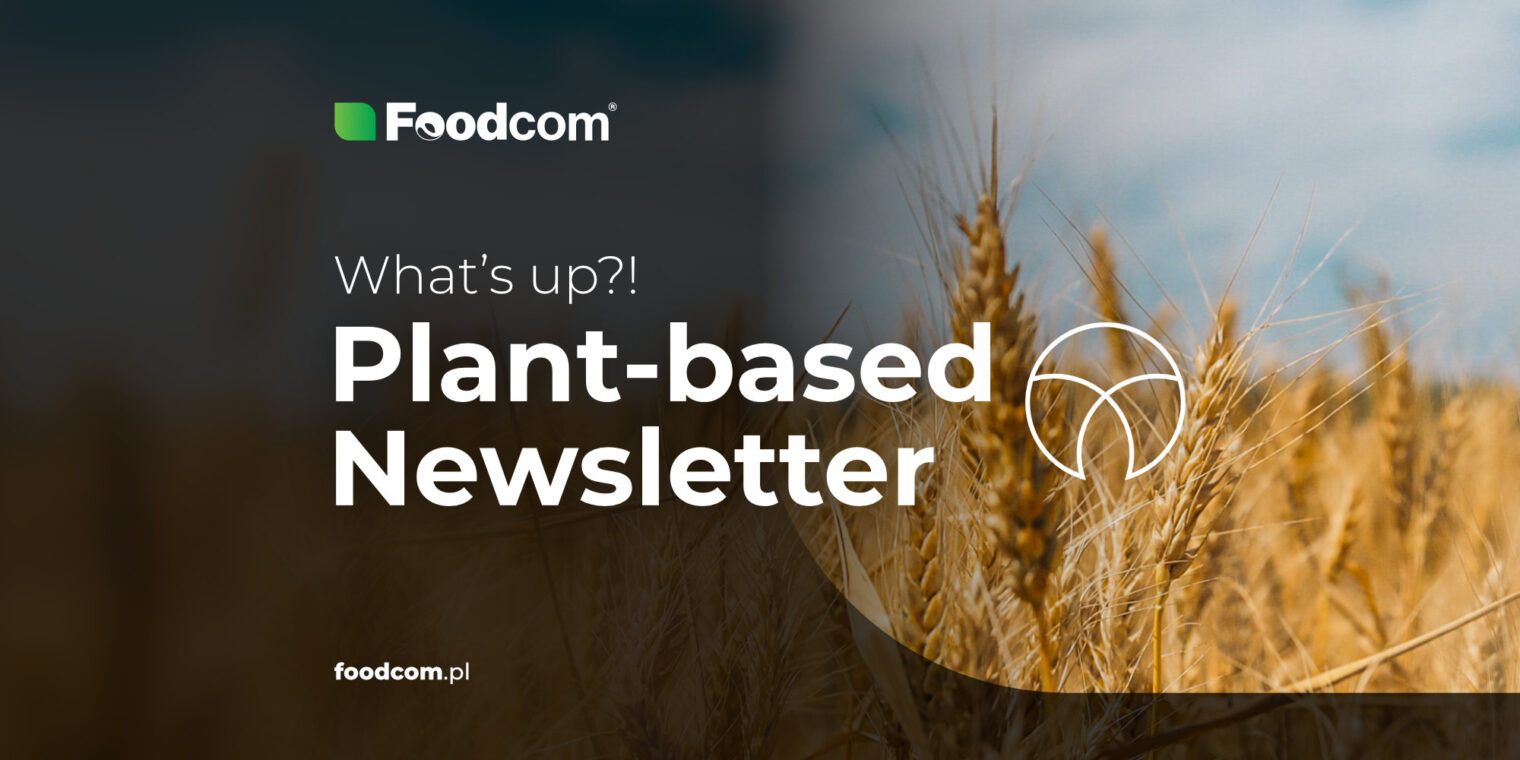The weather’s unpredictability in Europe is influencing changes in the plant-based market, particularly in cacao powder, which remains a popular choice. The feed market’s struggles are exacerbated by cheap Ukrainian products flooding Europe, leading to discussions about reanimating the Solidarity Line for grain transit. Protein demand in Europe favors lower prices and lower protein content. Sweeteners like maltitol, erythritol, and sugars are in high demand, with offers from Ukraine despite the ban until mid-September.
In Africa, Egypt reassures its wheat reserves amid Russia’s grain export suspension. South Africa celebrates its second-largest corn harvest, while Europe faces challenges with soybean yields in Argentina. Brazil aims for ambitious grain production, and the USA showcases sustainable soy asphalt technology. China diversifies its grain suppliers, and India’s ban on white rice exports triggers worldwide panic buying.
Overall, the agricultural landscape is marked by fluctuating weather conditions, geopolitical tensions, and shifting demands, driving uncertainty and strategic decision-making in the market.
Hello Partners!
The weather seems to be pretty erratic in Europe lately. Not that we haven’t been warned about it. Those anomalies will further influence changes on the plant-based market and make it more unpredictable. How will it unfold? We will surely see in the near future.
One thing is certain – that the cacao powder will stay a shining star in our offer. Great quality, amazing taste and even better quotations. Hit us up and check it out yourself!
GENERAL INFO
As we all know, the feed market has not been performing that well lately. The problem is connected not only with constantly dropping number of animals to feed. Moreover, cheap products from Ukraine have been pouring into Europe for about 1 year now. Corn, wheat, potato, sugar to feed both people and animals. Of course, the situation is not convenient for farmers, but officials in Brussels fight to acquire the less expensive materials, to help combat the roaring inflation. Of course, every situation has its angles.
The solution might be to reanimate the Solidarity Line to move the grains further west and south, but last time most of it stayed in Central Europe. The news is that grain in Africa comes mostly from Russia now. More about that in the news section. Anyhow, OPEC keeps raising the price of oil though, so inflation will remain more or less in place.
NATIVE STARCHES
Native potato starch is still holding strong. Even though the demand for Corn and Wheat Starches went down, the one from potato enjoys a steady demand. Among others, it’s used by paper producers. However we can see that some increasing quantities of native wheat starch are sold, mainly for gluten free products. It can be heard that some starches from Ukraine begin to reappear. Whether the prices are attractive or not, this is the question that the market will verify really soon.
PROTEINS
Trader shows in Chicago awoke hopes in VWG sellers. Seeing those beautifully high prices of the product they wanted to fulfill the American Dream and raised the price of the product in Europe. Will they be able to make their dream deals come true? For sure time will tell. Meanwhile, if you want to make some deals on the Old Continent, you better lower your price expectations. Lower protein content, lower prices seems to be the equation for big demand here.
Anyhow, when it comes to potato protein, the situation is quite different. Producers are not force selling and they believe we are ever-so-close to the rock bottom. Is it really or is there still lots of mud? Many say that this year’s harvest is even worse than the year before, but keep also in mind that there is no longer this many mouths to feed in the farms. Time will show.
SWEETENERS
Sweeteners are the sweetening agents of the trading game right now. Maltitol, erythritol and sugars are actively being looked for. Again, offers from Ukraine are popping up with availability from September up until the end of the year. Keep in mind though, the ban is still in place up to mid-September.
Europe & Africa
Call for actions to keep the prices more appealing
EU – Agriculture Commissioner Janusz Wojciechowski proposed that the European Union (EU) should use its funds to support the cost of transiting Ukrainian grain through its member states. Wojciechowski had discussions with agriculture ministers from Poland, Hungary, Slovakia, Romania, and Bulgaria during an EU ministers meeting to address the transit of Ukrainian grain through their territories. These five nations had imposed a temporary ban on the sale of Ukrainian grain until mid-September, responding to complaints from their domestic farmers about its harmful impact on their businesses. While they seek to extend the ban, it does not apply to goods transiting their territories.
The urgency of supporting the cost of transit is highlighted by Wojciechowski, who points out that the higher costs of land routes are making them less appealing. He said, «Russia will be the beneficiary of the situation because it will be cheaper than to pay for the grain from Ukraine transported to the Baltic ports, the cost of this operation will always be higher than what Russia can offer on the global market.»
Egypt – The questions about the security of wheat reserves
EGYPT – The Egyptian government reassured citizens about wheat reserves despite Russia’s suspension of the Black Sea Grain Initiative. The Minister of Supply and Internal Trade, Ali al-Mosilhy, stated that Egypt’s strategic wheat reserves are sufficient for five months of consumption. He criticized Russia’s withdrawal from the UN grain export deal, expressing concern about its impact on the transport, logistics, and cargo insurance sectors. Mosilhy expected an 8 percent global increase in the price of wheat but assured that the Egyptian government would bear any price differences without affecting citizens. Egypt is seeking alternative wheat sources, including India, France, Germany, Romania, the US, and Bulgaria, to maintain supply. The local wheat supply in Egypt amounts to 3.8 million tons. Agricultural expert Ashraf Kamal emphasized the importance of maintaining a safe strategic wheat stock and advocated diversifying supply sources and increasing self-sufficiency. The Egyptian state is taking measures to provide remunerative wheat prices and increase purchases from local farmers to secure supplies.
South Africa – Celebration of the second-largest corn harvest in history
SOUTH AFRICA – South Africa is currently experiencing its second-largest corn harvest in history, marking the fourth consecutive bumper crop. The US Department of Agriculture’s Foreign Agricultural Service (FAS) forecasts that this harvest, expected to yield over 17 million metric tons (MMT) in MY 2022/23, will result in a bearish outlook on local corn prices. The remarkable growth in corn production over the past seven years is attributed to improved yields and favorable weather conditions. Notably, South Africa has witnessed a doubling of corn yields in the last two decades, primarily due to the adoption of new production technologies like genetically engineered seeds and more efficient farming practices, such as precision and conservation farming. Moreover, the report predicts that the positive trend in soybean plantings will continue in MY 2023/24. Farmers have already planted a record soybean area of 1.1 million hectares in MY 2022/23, reflecting a substantial 24% increase from the previous marketing year.
The Americas
Argentina is fighting the lower-than-expected soybean yields
ARGENTINA – Argentina is facing lower-than-expected soybean yields, as indicated by a recent USDA FAS report. The estimated soybean production for MY 2022/2023 in Argentina is 21.25 million metric tons (MMT), which is 3.75 MMT below the official USDA estimate. This decline in production is impacting various aspects of the soybean market in Argentina. To drive soybean sales in the country, the government has been implementing exchange rate incentives through different programs. Farmers have been capitalizing on these incentives, and as a result, they are holding back some of their soybeans in anticipation of future programs that offer similar benefits.
Ambitious plans of Brazil
BRAZIL – Brazil aims to produce 390 million tons of grain in the next decade, primarily driven by soybean, second-crop corn, and cotton, relying on increased productivity. The current grain production stands at 313.8 million tons. The area planted with grains will expand by 19.1%, reaching 92.33 million hectares, with soybeans expected to account for 78% of this increase. Over the next ten years, Brazil is projected to increase soybean production by 20.6%, reaching 186.7 million tons, with 121.4 million tons being exported, representing 60.6% of global shipments. Corn production is also expected to grow by 27%, reaching 160 million tons, fueled by rising foreign demand and increased usage for ethanol production. Brazil will export 69 million tons of corn in 2032/33, solidifying its position as a key player in the world market alongside the United States.
The new use of soy-based polymer to help the farmers and the environment
USA – The Farm Progress Show, the nation’s largest outdoor farm show, will feature new sustainable technology at the Varied Industries Tent this year. The paving project, sponsored by the Illinois Soybean Association, utilizes soy asphalt technology, which involves 100% recycled asphalt pavement mixed with a soy-based polymer. Creators expressed pride in incorporating soy-based products highlighting how using soy over petroleum-based alternatives benefits the environment and increases demand for Illinois soybeans. The soy-based asphalt offers improved durability, extending its lifetime and creating an enhanced experience for attendees. A total of 4,200 pounds of soybean oil were used, equivalent to the oil derived from up to 392 bushels of soybeans. The increasing demand for soybean oil arises from its application in various industries, enhancing products from plastics and rubber to adhesives and paper.
Asia
China – Brazil surpassed Ukraine in grain deliveries
CHINA – Based on Chinese customs data, China imported over 20 million tons of grain last year, with the United States and Ukraine being the primary suppliers. However, since the commencement of the war in Ukraine, China has actively sought out new agricultural partners. Beijing has included Brazil, Myanmar, and South Africa in its approved list of corn suppliers. Consequently, in the first quarter of the current year, Brazil surpassed Ukraine, accounting for 28.8% and 27.7% of grain imports, respectively. Experts emphasize that the closure of the grain corridor will undoubtedly have repercussions on the Chinese grain market. Ukraine was the most cost-effective source due to its well-established infrastructure.
Joint effort helped to minimize the impact of the weather
CHINA- Before the adverse weather hit provinces like Henan and Shaanxi in central and northwest China, there were predictions of a good summer harvest. However, the overcast and rainy weather presented challenges, as reaping machines couldn’t operate on muddy ground, and ripe wheat began to sprout prematurely. Despite the challenges, the Chinese government took proactive measures to minimize the impact. To address this, the central government allocated 546 million yuan ($76 million) to severely affected regions and coordinated the deployment of over 600,000 combine harvesters to rush-harvest and dry the wheat continuously. As a result of these efforts, they achieved a daily harvesting record of 1,600,000 hectares during the rush-harvesting period, significantly reducing the time it took to complete the harvest.
India’s ban caused world-wide panic buying
INDIA – Starting from July 20, the Indian government has decided to impose a ban on white rice exports (excluding basmati rice). This decision comes in response to a sharp 3% increase in domestic prices for white rice over the past month due to extensive damage caused by heavy monsoon rains to the crops. Throughout the year, white rice prices in India have surged by 11.5%.
Considering that India is responsible for 40% of global rice exports, any reduction in supplies could have significant implications for food prices, which have already been impacted by uncertain weather conditions and the ongoing war in Ukraine. The Indian government’s ban on non-basmati rice exports has triggered widespread panic-buying and stockpiling of Indian rice globally, resulting in a surge in prices. Reports of panic-buying are surfacing on social media in Canada, the U.S., and other countries. Stores catering to South Asian communities are implementing purchase limits for customers and adjusting prices to manage the increased demand.







